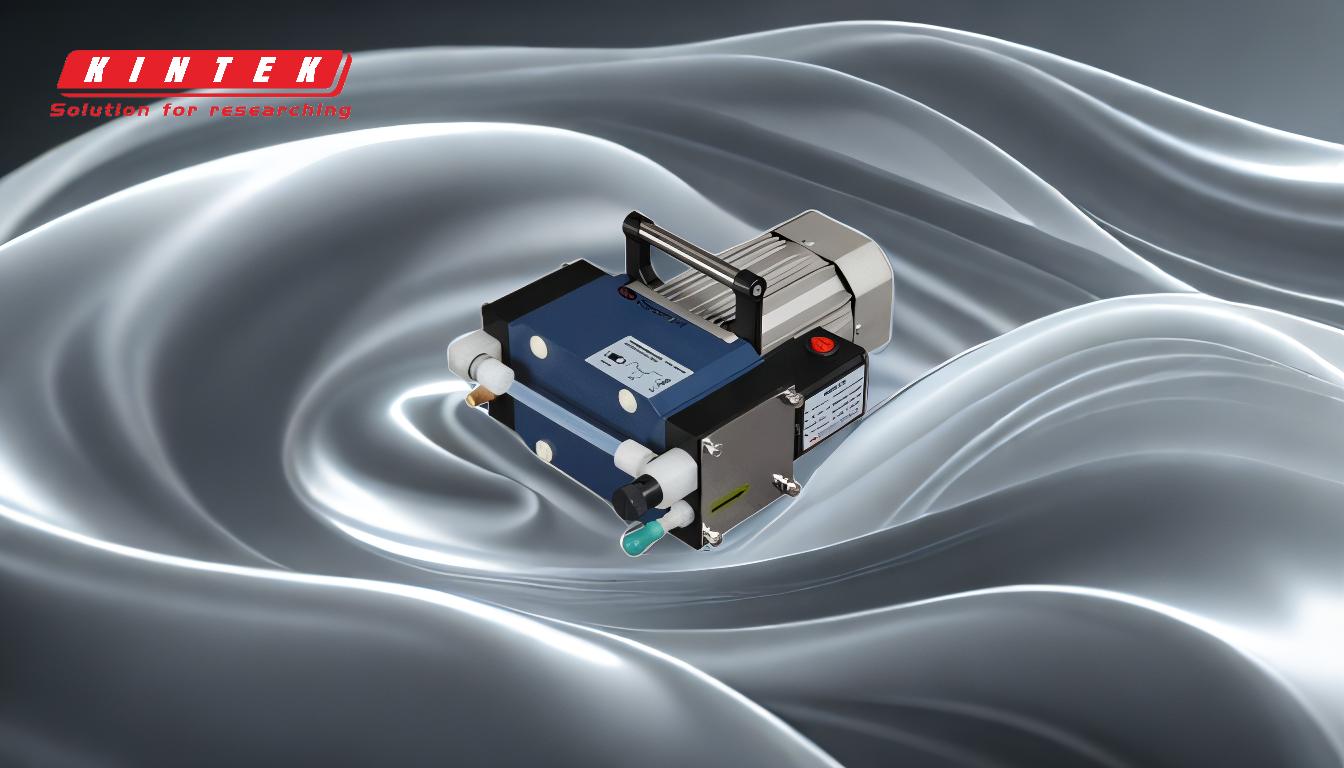A vacuum pump reduces pressure by removing gas molecules or air particles from a sealed volume, creating a partial or full vacuum. This is achieved by exploiting the natural tendency of gas molecules to flow from high-pressure areas to low-pressure areas. The pump does not "suck" gases but instead pushes molecules by altering pressure states. The process can be mechanical or chemical, depending on the type of pump. As the pump operates, it compresses and discharges gas, reducing the pressure within the sealed volume. The efficiency of this process depends on the pump's design, the pressure range, and the ability to maintain a tight seal.
Key Points Explained:

-
Principle of Gas Flow:
- Gas molecules naturally move from areas of high pressure to low pressure to equalize pressure differences.
- A vacuum pump leverages this principle by creating a low-pressure region, causing gas molecules to flow into the pump from the sealed volume.
-
Mechanism of Action:
- Vacuum pumps do not "suck" gases but instead push molecules by altering pressure states.
- The pump takes in gas at a pressure lower than atmospheric pressure, compresses it, and then discharges the gas at atmospheric pressure.
-
Types of Vacuum Pumps:
- Mechanical Pumps: These use physical mechanisms, such as rotating blades or pistons, to move gas molecules and create a vacuum.
- Chemical Pumps: These rely on chemical reactions to remove gas molecules, often used in specialized applications.
-
Pressure Reduction Process:
- The pump removes air, gases, and other molecules from the vacuum chamber.
- As pressure decreases in the chamber, removing additional molecules becomes more challenging, requiring the system to operate over a wide pressure range (e.g., 1.3 to 13.3 mbar).
-
System Setup and Operation:
- Select the appropriate pump for the specific application.
- Connect the pump to the system using hoses or tubing, ensuring a tight seal to prevent leaks.
- Use a vacuum gauge to monitor pressure levels.
- Turn on the pump and allow it to reach operating temperature, enabling it to create and maintain a vacuum.
-
Challenges in High Vacuum Conditions:
- In higher vacuum conditions, the pump must work harder to remove molecules, as fewer molecules are present.
- Advanced systems may use multiple pumps in series to achieve the desired vacuum level.
-
Applications and Importance:
- Vacuum pumps are essential in various industries, including manufacturing, research, and healthcare, where controlled environments are necessary.
- They are used in processes such as semiconductor fabrication, medical device sterilization, and space simulation.
By understanding these key points, one can appreciate how vacuum pumps effectively reduce pressure and create vacuum conditions, enabling a wide range of industrial and scientific applications.
Summary Table:
| Key Aspect | Details |
|---|---|
| Principle of Gas Flow | Gas molecules move from high to low pressure, enabling vacuum creation. |
| Mechanism of Action | Pumps alter pressure states to push molecules, not 'suck' them. |
| Types of Vacuum Pumps | Mechanical (rotating blades/pistons) and chemical (reaction-based) pumps. |
| Pressure Reduction Process | Removes molecules from a sealed volume, operating over a wide pressure range. |
| System Setup | Requires tight seals, proper hosing, and vacuum gauge monitoring. |
| High Vacuum Challenges | Fewer molecules make removal harder; advanced systems use multiple pumps. |
| Applications | Used in semiconductor fabrication, sterilization, and space simulation. |
Discover the right vacuum pump for your needs—contact our experts today!










